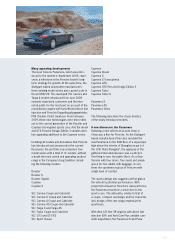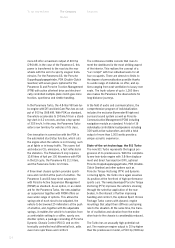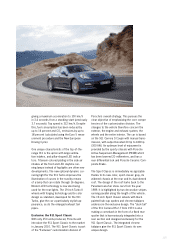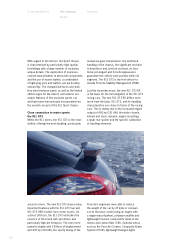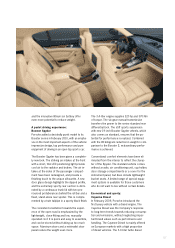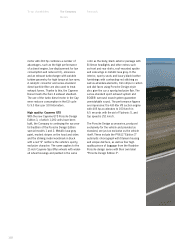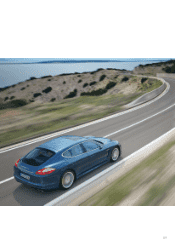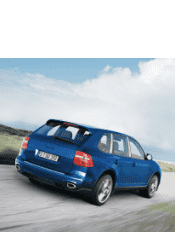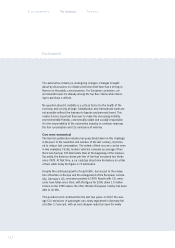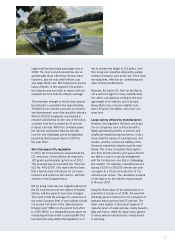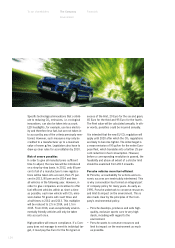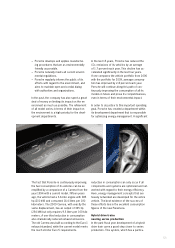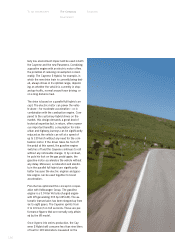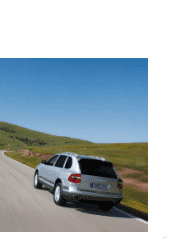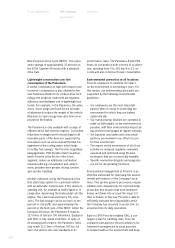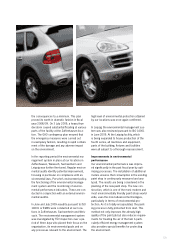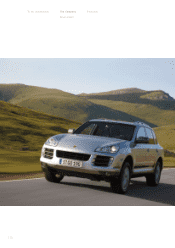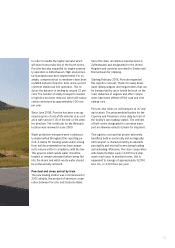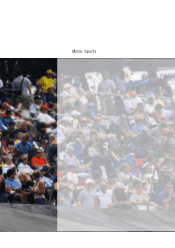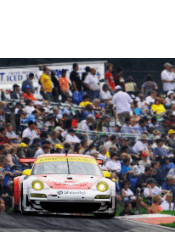Porsche 2008 Annual Report Download - page 125
Download and view the complete annual report
Please find page 125 of the 2008 Porsche annual report below. You can navigate through the pages in the report by either clicking on the pages listed below, or by using the keyword search tool below to find specific information within the annual report.
123
registered German-brand passenger cars in
2008. The most economical vehicles are un-
questionably those offered by German manu-
facturers, and not only small vehicles, but
also large family cars. Most impressive are the
luxury vehicles. In this segment, the automo-
tive industry was even able to reduce fuel con-
sumption by more than the industry average.
The innovative strength of the German automo-
tive industry is revealed in the approximately
19 billion Euro it invests each year in research
and development, more than any other industry.
Almost 100,000 employees are involved in
research and develop for the cars of the future,
a number that has increased by 50 percent
in about a decade. With this combined power,
the German automotive industry will also
face the new challenges posed by legislation
passed by the European Union in 2009 for
the year 2012.
Strict European CO2 legislation
In 2007, the EU Commission required that the
CO2 emissions of new vehicles be reduced to
120 grams per kilometer (g/km) as of 2012.
This proposal was incorporated into “Directive
(EC) No. 443/2009”. This marks the first time
that a law has been introduced for car manu-
facturers and importers who want to sell their
vehicles in the European Union.
Before being made law, the original proposal of
the EU Commission was the subject of heated
debate, and key aspects have been changed.
The result is that the average CO2 emissions of
the entire European fleet of new vehicles should
not exceed 130 g/km in the „New European
Driving Cycle“ (NEDC) in the period from 2012
to 2020. NEDC is a standardized procedure for
measuring emissions with a speed profile that
has been precisely defined by legislation. In or-
der to achieve the target of 120 g/km, a fur-
ther ten grams should be attained by supple-
mentary measures such as the use of bio-fuels,
low-drag tires, effective air conditioning and
other technical refinements.
However, the future CO2 limit for the fleet is
not a uniform target for every manufacturer.
It is rather calculated according to the aver-
age weight of its vehicles sold in Europe.
Heavy fleets may consume slightly more
than 130 g/km, the lighter ones must con-
sume less.
Large variety offered by manufacturers
However, this regulation still does not do jus-
tice to companies such as Porsche with a
highly specialized portfolio of vehicles and
smallscale manufacturing operations. Critics
stress that the variety of manufacturers and
models, and the commercial viability of the
European automotive industry must be main-
tained. This is why companies that register
less than 10,000 vehicles each year in the EU
are able to come to a special arrangement
with the Commission; one that is challenging
but realistic. For example, manufacturers pro-
ducing 10,000 to 300,000 vehicles per year
can agree to a 25 percent reduction of CO2
emissions per annum. The calculation is based
on the figures for the vehicles manufactured
in the year 2007.
Using the fleet values of all manufacturers re-
presented in Europe as of 2006, the new limit
will bring about a reduction in CO2 emissions of
between eleven percent and 25 percent. The
lower value applies to the lowest segment of
manu-facturers of small vehicles, mainly based in
Italy and France, while the upper value applies
to luxury vehicle manufacturers, mainly based
in Germany.


